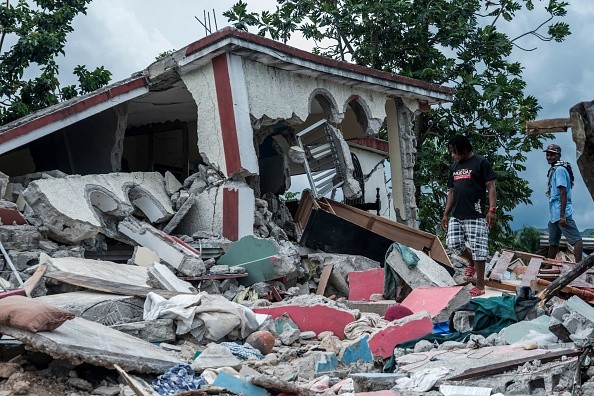
A Canadian-German research team discovered a new kind of earthquake in an injection setting in British Columbia, Canada. The newly-discovered quake is slower, lasting longer than conventional earthquakes of the same magnitude.

New Type of Induced Earthquake
The events are a new form of induced earthquake which hydraulic fracturing triggers. Hydraulic fracturing is a technique which western Canada uses for extracting oil and gas.
Researchers from the Geological Survey of Canada, Ruhr-Universität Bochum, and McGill University used an eight-station network encircling an injection well at a distance of a few kilometers to gather seismic data from about 350 earthquakes.
Around 10% of the earthquakes discovered had unusual characteristics, indicating that they ruptured more slowly, comparable to what had previously been seen only in volcanic zones, according to Phys.org.
Researchers have proposed two theories to explain the occurrence of earthquakes during the hydraulic-fracturing process so far. According to the first theory, the fluid injected into the rock causes a significant pressure rise in the underlying rocks surrounding the well, resulting in the formation of a new network of cracks.
As an outcome, the pressure rise might be significant enough to unclamp existing faults and cause an earthquake. The rise in fluid pressure caused by injection in the subsurface also causes elastic stress changes in the surrounding rocks, which may be communicated across greater distances, according to the second process.
If stress changes occur in rocks with faults, they may cause the fault to slide, resulting in an earthquake.
Process on Faults Near Injection Wells
Numerical models and lab analysis have recently predicted a mechanism on faults near injection wells that has been seen on tectonic faults elsewhere. The process, known as aseismic slip, begins as a sluggish slide with no seismic energy released.
The sluggish slide may also produce a stress shift on adjoining faults, causing them to slip more quickly and resulting in an earthquake.
It's difficult to see in nature due to the absence of seismic energy from aseismic slide and the magnitude of the faults involved. As a result, researchers have not been able to link aseismic slip to produced earthquakes in a wide sense.
Indirect evidence of aseismic loading and a shift from aseismic to seismic slip is provided by the present investigation.
Changing the Process of Hydraulic Fracturing
The freshly observed slow earthquakes are seen by the German-Canadian research team as a hybrid of conventional earthquakes and aseismic slide - and hence as indirect proof that aseismic slip may occur near wells. As a result, the scientists called the occurrences hybrid-frequency waveform earthquakes (EHW).
"If we understand at which point the subsurface reacts to the hydraulic-fracturing process with movements that don't result in an earthquake and, consequently, cause no damage to the surface, ideally we could use that information to adjust the injection procedure accordingly," as Rebecca Harrington, head of the Hydrogeomechanics Group at RUB, describes one of the study's implication.
According to Rebecca Harrington, scientists assumed that induced earthquakes ruptured at a rate of two to three kilometers per hour, as is the case with most other kinds of earthquakes.
But this does not seem to be the case on a regular basis In the researchers' data set, a conventional earthquake of magnitude 1.5 shook for around seven seconds, whereas an EHW earthquake of the same magnitude kept shaking for more than ten seconds.
Related Article : 8 Most Disastrous and Deadliest Earthquakes From the Last Decade
For more news, updates about earthquakes and similar topics don't forget to follow Nature World News!
© 2025 NatureWorldNews.com All rights reserved. Do not reproduce without permission.





